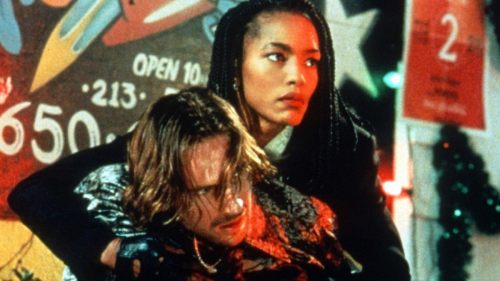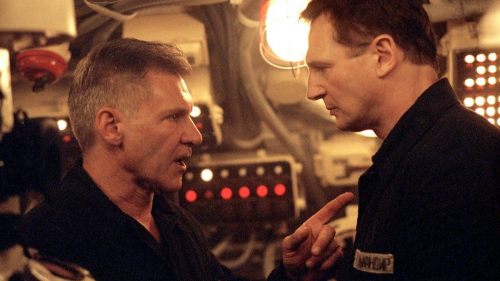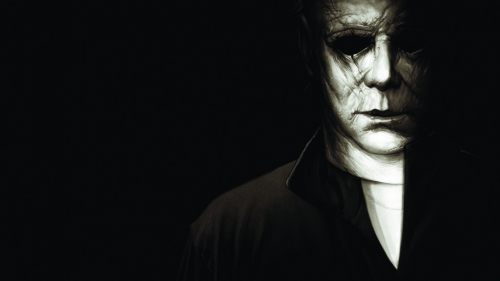The Savage Stack - BLUE STEEL (1990)
There’s always going to be – for lack of a better term – a stack of films we’ve been meaning to get to. Whether it’s a pile of DVDs and Blu-rays haphazardly amassed atop our television stands, or a seemingly endless digital queue on our respective streaming accounts, there’s simply more movies than time to watch them. This column is here to make that problem worse. Ostensibly an extension of Everybody’s Into Weirdness (may that series rest in peace), The Savage Stack is a compilation of the odd and magnificent motion pictures you probably should be watching instead of popping in The Avengers for the 2,000th time. Not that there’s anything wrong with filmic “comfort food” (God knows we all have titles we frequently return to when we crave that warm and fuzzy feeling), but if you love movies, you should never stop searching for the next title that’s going to make your “To Watch” list that much more insurmountable. Some will be favorites, others oddities, with esoteric eccentricities thrown in for good measure. All in all, a mountain of movies to conquer.
The twenty-fifth entry into this unbroken backlog is Kathryn Bigelow’s feminist response to Cannon’s 80s action output, Blue Steel…

Women are underestimated more often than they’re trusted. This is the thesis statement posited from the opening scene of Kathryn Bigelow’s Blue Steel (’90), as law enforcement officer Megan Turner (Jamie Lee Curtis) navigates a dim hallway, her service revolver drawn and held at attention. Commotion echoes from a nearby shithole apartment, and when she pushes her way inside, Megan finds a distraught husband holding a pistol to his screaming wife’s temple. Turner tells the man to drop the weapon, but he defies her, screaming misogynistic profanities before turning his gun on her. Turner doesn’t hesitate for a second, blowing the man into the next life. Unfortunately, his better half grabs ahold of another firearm in the house and lights the blue girl up. It doesn’t matter that the whole scenario turns out to be one of the final Academy exercises before Trainee Turner’s graduation. The lesson learned is that even she took her own sex for granted, and were this out on the street instead of a simulation, her colleagues would be offering up a dress uniform show of respect as her casket is lowered into the dirt.
When discussing Bigelow’s body of work, fans and critics alike have created a schism within the stellar list of titles she’s crafted, categorizing them by her politicization of subject matter. This cataloging usually begins with the military-oriented motion pictures that dominate the latter half of her filmography. However, the simple fact is that all of Bigelow’s movies are political in one way or another, regardless of each’s genre window-dressing. Near Dark (’87) and Point Break (‘91) are both about outlaw sects living by their own codes, and even ushering innocents hooked on society’s systems into their ranks (as both Caleb and Johnny Utah respectively enjoy a taste of existing amongst the rebellion). Strange Days (’95) finds the anti-reality auteur transmuting images of LA Riot-era police brutality into science fiction, all while a serial rapist exploits emerging VR technology in order to prey on new victims. The Weight of Water (’00) revolves around the historic account of two murdered immigrant women, while K-19: The Widowmaker (’02) takes place aboard a Cold War nuclear sub and forces us to witness the tragic disaster that befell its Red crew. After the financial failure of that film, The Hurt Locker (’09) reignited Bigelow’s career with the Academy Award winning account of an Iraq War explosive diffusion expert. Zero Dark Thirty (’12) continued her military fetish, as the director fictionalized the covert operation that led to the assassination of Osama Bin Laden. But even before she stepped behind the camera, Bigelow co-starred in Born in Flames (’83), Lizzie Borden’s feminist science fiction parable that takes on everything from fascism to the hetero-normalizing of our culture.
Blue Steel is no different; only in casting horror cinema’s most recognizable Final Girl as the pretty trigger-happy NYPD rookie, Bigelow’s saddling viewers with visual baggage we may not even identify as the first reel begins to roll. We see Curtis’ attractive policewoman as a victim from frame one, even as she rushes into a convenience store (in a sequence that echoes Sylvester Stallone’s absurdist action extravaganza, Cobra [‘86]) and shoots the suspect (Tom Sizemore) through a plate glass window. Once slick weirdo Eugene Hunt (Ron Silver) steals the perp’s gun and walks off from the scene undetected, an intricate exercise in gas-lighting transpires as Megan’s superiors question her actions. Jamie Lee is again playing an Ultimate Victim archetype, trying to get all of her male colleagues to understand that she’s not just a hysterical, hallucinating woman. Bigelow is marrying action movie grammar with slasher iconography, and our hearts bleed for Megan as she begs for anyone to just hear her out. Why is this happening to again? It’s no different than Laurie Strode, we think. Not only does Megan have to deal with the constant degradation of everybody she encounters (man and woman alike) inquiring as to “why such a pretty girl would want to be a cop”, the cycle of victimhood is beginning all over for another great character in Curtis’ storied career.
Meanwhile, Eugene is out having the time of his life. A grotesque play on Tom Wolfe’s Master of the Universe Wall Street broker, Bigelow uses stretches of silence to deliver a pure cinema intro to the psychopath. From the bougie Manhattan apartment to his Armani suits, it’s easy to understand how Eugene’s become bored with this kingdom he’s conquered. But the gun; the gun has gifted him renewed virility. Because when he points it into another man’s face and pulls the trigger, the fear in their eyes is better than any orgasm he’s experienced in his life. There’s a wild coke-nose skittishness that pervades Silver’s every movement, like he’s a Faustian East Coast take on Ellis from Die Hard (’88). Nevertheless, no woman can match the deadly light he saw in Megan Turner when she shot down that lowlife scum. So he begins etching her name into the casings of bullets he plugs into each of his victims. Now Internal Affairs has a new reason to investigate their favorite freshman female on the force. A power struggle to see who can possess Officer Turner follows, pushing her back up against the wall (which becomes a literal visual leitmotif). It’s a feminist response to Charles Bronson skeez sessions like 10 to Midnight (’83), as a cocky murder detective (Clancy Brown) dangles Megan like bait, certain Eugene will come calling.
The action deconstruction Bigelow performs would feel academic if the entire work weren’t so savagely violent. Like Sam Peckinpah before her, Bigelow has no problem admitting that she enjoys the seductive nature of onscreen violence. Only where Peckinpah strove to depict how gunfire could ravage human flesh, Bigelow has a gore hound’s propensity for blood squibs exploding in slow motion. Blue Steel is an absolutely beautiful film, and Bigelow stages the bursts of violence with the same loving attention to filmic poetry she applies to the city of New York. Her picture often takes on an impressionistic tenor, as deafening gunfights are surrounded by a glowing cityscape comprised of iron and glass. In a way, the film is a dreamy wave goodbye to the blunt grime portraits from exploitation workmen like Bill Lustig (Maniac [‘80], Vigilante [‘83]). Lovers become silhouettes in front of dark blue windows, high above a street where hookers still prowl cheap porno theaters. Cinematographer Amir Mokri (Bad Boys II [‘03]) captures elegant shafts of light and shadow, as Terminator [‘84] composer Brad Fiedel’s synth score rises and falls. Bigelow is examining each piece of the genre she’s taken apart, as if drawing herself a blueprint she’d use to rebuild them into a perfect genre entry (Point Break) the very next year.
Nevertheless, none of this intricate cinematic craft (not to mention the deft script Bigelow co-wrote with Near Dark scribe Eric Red) would matter if it weren’t for Curtis, who again proves herself to be one of the most physically gifted female performers of all time. Curtis expertly angles her lanky, athletic frame during dramatic scenes, conveying just as much with a simple lean or gesture as she does with her patented “tomboy next door” line delivery. During a firefight or subway chase, the actress throws down with the best of her male counterparts, wielding furious wrath after shielding herself from the raining debris of a shattered car window. That’s what makes it all the more difficult to watch these men close in and corner Megan, as Bigelow understands what a charmingly domineering screen presence Curtis possesses. Megan Turner is a good cop who will lock up her own father (Philip Bosco) if he ever lays a hand on her mother (Louise Fletcher) again. So when Eugene ends up intimidating and assaulting her (in an act of sexual savagery pulled straight from an exploitation picture) it stings our souls. Bigelow is not only presenting a virtuous woman striving to thrive within a man’s profession. Officer Turner is also OK with indulging the authority the act of policing grants her. It’s a shaky union of gender politics and vulgar displays of fascistic power. Nothing is more political than that.
Blue Steel is available now on DVD and to stream.



